A Broadwell Retrospective Review in 2020: Is eDRAM Still Worth It?
by Dr. Ian Cutress on November 2, 2020 11:00 AM ESTGaming Tests: Strange Brigade
Strange Brigade is based in 1903’s Egypt, and follows a story which is very similar to that of the Mummy film franchise. This particular third-person shooter is developed by Rebellion Developments which is more widely known for games such as the Sniper Elite and Alien vs Predator series. The game follows the hunt for Seteki the Witch Queen, who has arose once again and the only ‘troop’ who can ultimately stop her. Gameplay is cooperative centric with a wide variety of different levels and many puzzles which need solving by the British colonial Secret Service agents sent to put an end to her reign of barbaric and brutality.
The game supports both the DirectX 12 and Vulkan APIs and houses its own built-in benchmark as an on-rails experience through the game. For quality, the game offers various options up for customization including textures, anti-aliasing, reflections, draw distance and even allows users to enable or disable motion blur, ambient occlusion and tessellation among others. Strange Brigade supports Vulkan and DX12, and so we test on both.
- 720p Low, 1440p Low, 4K Low, 1080p Ultra
The automation for Strange Brigade is one of the easiest in our suite – the settings and quality can be changed by pre-prepared .ini files, and the benchmark is called via the command line. The output includes all the frame time data.

| AnandTech | Low Res Low Qual |
Medium Res Low Qual |
High Res Low Qual |
Medium Res Max Qual |
| Average FPS |  |
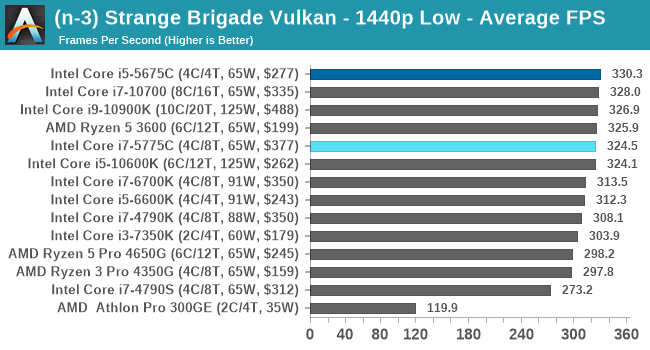 |
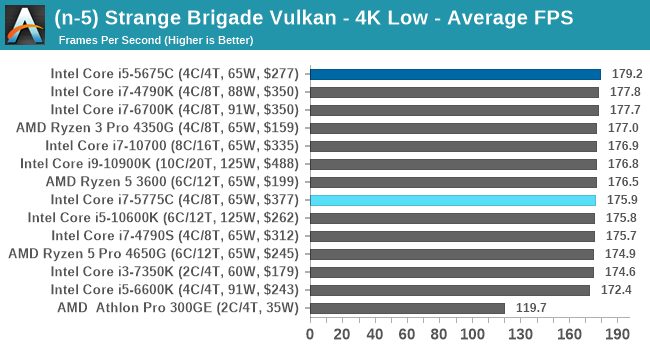 |
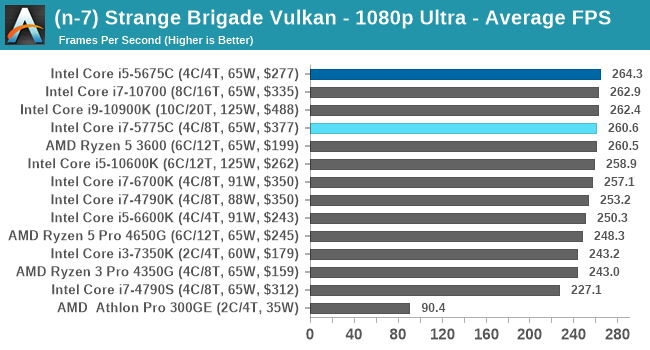 |
| 95th Percentile | 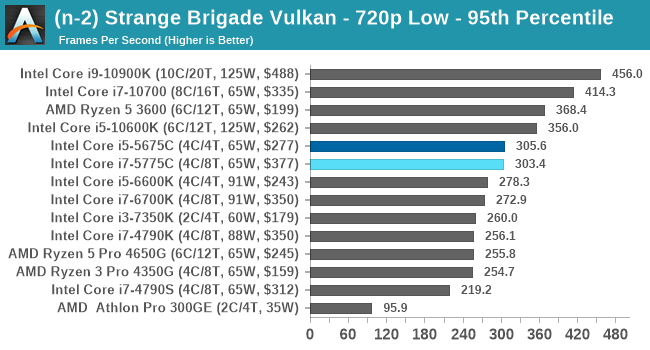 |
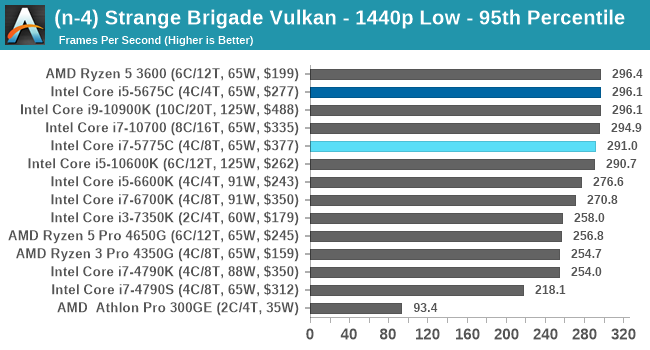 |
 |
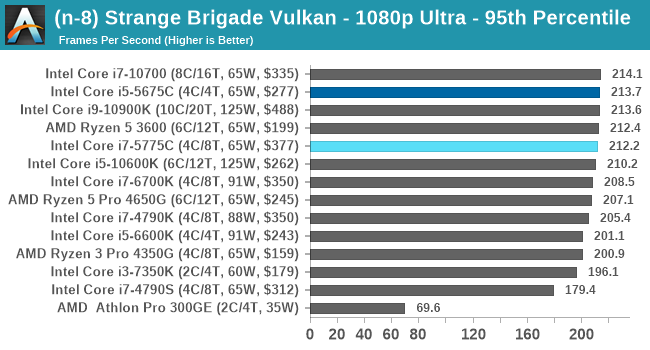 |
All of our benchmark results can also be found in our benchmark engine, Bench.











120 Comments
View All Comments
Khenglish - Monday, November 2, 2020 - link
The infinity cache is SRAM, which will be faster but much lower density. Only IBM ever integrated DRAM on the same die as a processor. The DRAM capacitor takes up the space where you want to put all your CPU wiring.Quantumz0d - Monday, November 2, 2020 - link
Always thought why Intel is so fucking foolish in making that shitty iGPU die instead of making eDRAM on the chip. It would have given a massive boost for all their CPUs. A big missed opportunity. AMD had this "Game cache" on their Zen 2 and now with RDNA2, "Infinity Cache" again..jospoortvliet - Wednesday, November 4, 2020 - link
I guess they did the math on cost and power. They always had better memory controllers and prefetchers so they didn't benefit as much from cache- they also have the memory controller on-die, unlike amd with their i/o die. So intel would benefit waaaay less than amd does, in almost every way.dragosmp - Monday, November 2, 2020 - link
"...the same 22nm eDRAM chip is still in use today with Apple's 2020 base Macbook Pro 13"Ahem, what? Is that CPU an off the roadmap Tiger Lake?
Jorgp2 - Monday, November 2, 2020 - link
Tiger Lake doesn't have the hardware for an L4.It's probably the Skylake version
colinisation - Monday, November 2, 2020 - link
Do the part numbers on Intel CPU's mean anything, I picked up a 5775C a week agoand have not installed it yet but the part number starts "L523" - I just assume it is a later batch than what is in the review.ilt24 - Tuesday, November 3, 2020 - link
@colinisationThat L523 are the first 4 characters of the is the Finished Process Order or Batch#.
The L says it was packaged in Malaysia
The 5 says it was packaged in 2015
The 23 says it was packaged on the 23rd week
Digits 5-8 are the specific lot number number of the wafer the die came from
colinisation - Tuesday, November 3, 2020 - link
@ilt24 - Thank you very muchMday - Monday, November 2, 2020 - link
I expected more eDRAM implementations after Broadwell coming from Intel and AMD on the CPU side, as a low latency - high "capacity" cache, particularly after the launch of HBM. It made me wonder why Intel even bothered, or what shifts in strategies moved them to and away from eDRAM.ichaya - Monday, November 2, 2020 - link
This is really the first desktop part I'm hearing of, weren't most of these "Iris Pro" chips sold in Apple laptops with maybe a small minority being sold by other laptop OEMs? I believe so.